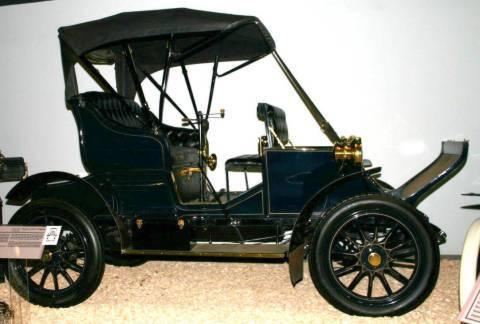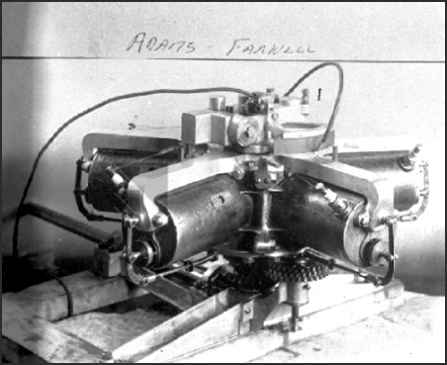Encyclopedia Dubuque
"Encyclopedia Dubuque is the online authority for all things Dubuque, written by the people who know the city best.”
Marshall Cohen—researcher and producer, CNN
Affiliated with the Local History Network of the State Historical Society of Iowa, and the Iowa Museum Association.
ADAMS-FARWELL AUTOMOBILES
ADAMS-FARWELL AUTOMOBILES. Dubuque's highly honored contribution to America's automobile heritage. Between 1898 and 1907, the ADAMS COMPANY manufactured fifty-two automobiles featuring futuristic innovations including an air-cooled engine placed in the rear of the car, fuel injection, supercharging, and automatic timing.
In 1898 Model One, Adams-Farwell's horseless carriage," was built with an engine designed by Fay O. FARWELL, the factory's superintendent and self-taught mechanic. Farwell mounted his engine, which revolved on a vertical axis, on an express wagon. This was to be the only model designed with the engine in the front. Only one car was built.
Model Two, built about 1899, refined the car's appearance, comfort, and design. The single model produced was not offered for sale. The Model Three, built in the fall of 1901, so captured Farwell's interest that in 1903 he added doors, canopy top and a glass windshield. Cars suddenly had potential for year-round use.
The 1904 Adams-Farwell Model Five was powered by a twenty horsepower three-cylinder rotary engine. Acclaim by this time was becoming widespread. Exhibitors at the Chicago Auto Show in February 1905 praised the car for its innovations. The same year an Adams-Farwell car posted the best time of any air-cooled entry entered in the Chicago, Illinois, to St. Paul, Minnesota, auto race.
In 1906 a new model followed with five cylinders capable of producing forty to forty-five horsepower. The engine was able to produce between 40-45 horsepower. With the body constructed locally at the Connolly Carriage and Buggy Company, this model cost $2,500.
Adams-Farwell cars were noted for their numerous innovations. The 1905 or 1906 Model Six B, built as the first production model, was advertised as a convertible because it could carry six passengers or could be used as a single-seated vehicle. The cars lacked the familiar crank, but instead used a lever pulled up from the floorboards. The engine was located under the rear seat ahead of the axle. The crankshaft did not turn; however, the engine did, which cooled it. Clever designing in 1904 allowed the driver to shift from left to right hand operation or drive the car from the rear seat.
Beginning in 1908, the forward control model was dropped with no new models designed. Perhaps remembering the hills of Dubuque, Adams-Farwell cars introduced a double clutch. While using one gear, a driver could engage another gear on the clutch. This assured that drivers would not miss a gear on a hill. This was a unique safety feature. Most cars of that day had brakes that would stop only a forward motion. Farwell did not believe a muffler was needed, an idea that did not meet with everyone's agreement.
Adams-Farwell automobiles gleamed with twenty-two coats of hand-rubbed lacquer. The appearance of the cars was further enhanced with pleated leather seats, a large brass bulb horn and brass lamps. In 1912 the price for the forty horsepower model reached $3,500.
Nine different models were produced between 1898 and 1910. Insufficient sales halted production. Adams-Farwell cars cost between $2,500 and $4,500 at a time when the Model T, introduced and designed by Henry FORD in 1908, was much cheaper. Automobile historians long sought an example of an Adams-Farwell car. In 1945 careful detective work proved successful when it was discovered that Florida resident Emerson Clavel owned a 1906 model. Clavel later sold his car to D. Cameron Peck who restored and then sold the car to Henry Austin Clark, Jr. of New York. This automobile, purchased from Clark in 1963 by the Harrah Automobile Foundation, is now displayed in Reno, Nevada, at the Harrah Museum.



